I got a few articles of similar nature. There is a thick vein running in the fake ancient cultures and history thread. There are groups specialized faking dig sites specifically to make the bible as a reliable World History source. The Old Testament is relevant to Islam, Judaism, and Christianity so its still a valid perspective from people on extreme ends of the spectrum of religion. Organized Religion has been the most effective Mind Kontrol mechanism ever deployed in the psychological warfare department.
The first one is the Royal Library of Babylon. Babylon is symbol ix its self, you know, the whole Tower of Babel and confusing the tongues of man thing might not be the best place to start off with a library. This library is where they found the Epic of Gilgamesh, which is repackaged Noah’s Deluge except 1,000 years earlier, Noah is a euphemism for the Reset and Mudflood. This essay introduces characters and presents evidence of how the Library was staged in order to serve as an endless supply of bogus information. The thing is its of a rebellious nature so everything that comes out of this camp is going to support more religious themes, its a cycle, the library was very strategic.
Part 2 is a good investigation and extension of the library. Supposedly they found a clay tablet describing an eye witness account of a meteor explosion that wiped out Sodom and Gomorrah. Leads to another dig claiming to be the remains of Sodom but the bible story is a cover up for the mudflood and Directed Energy evidence.
Meteor Explosion Sodom vs. the DEW Machine
Part 3 is popular tourist destination Pompeii, Italy. Pompeii is another mudflood site staged to look like the volcano. The volcano replaces the fire and brimstone in Pompeii as does the meteor airburst in el Hammam. Brothels are the most well-known association with Pompeii, with the eloborate mosaics and frescoes… (They’re trannies)
Heres some that’re just fun to look at the pictures. The areas are so over lapping writing a report about one area without mentioning the rest is difficult but the record would be too long to make a single all-inclusive. I had to break them down. These are all introductions, one could spend a lifetime researching any single post and that would not be a lifetime in waste.
- Fake archeological sites of Mesopotamia
- Heres one on Ancient Persia
- And another on Ancient Egypt and King Tut
- And the Caucasus Mountain region
Bashan, Golan Stone Henge
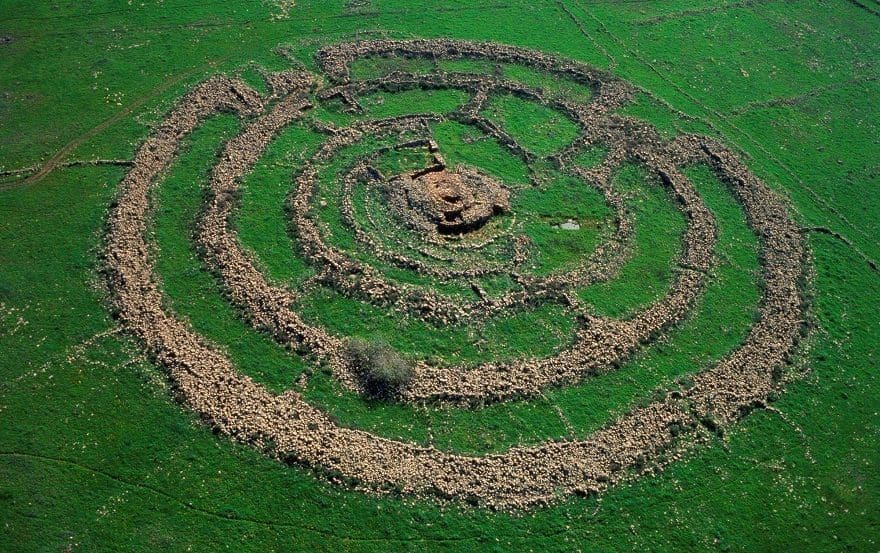
“Scientists come and are amazed by the site and think up their own theories,”
Stonehenge in the Golan

After the Six-Day War in 1967, archaeologists studying an aerial map of Israel discovered a strange formation of five concentric rings of loose rock located some ten miles east of the coast of the Sea of Galilee, in the middle of a large plateau covered with hundreds of single-chamber megalithic tombs called dolmens. The formation is not recognizable from the ground, appearing as random piles of rocks, but from above it is quite impressive, with an outer ring more than nearly 520 feet wide and eight feet high. It is called Rujm el-Hiri in Arabic, or Wheel of the Giants. [War is usually used as a cover for hoaxsters]
At its center is a mound of loose stones over 65 feet in diameter and over 16 feet tall, covering a burial chamber almost 20 feet long. The entire formation is composed of over 40,000 tons of loose basalt rocks. It was estimated that the transportation and building of the massive monument would have required more than 25,000 working days. [“Over 65” is 66, “16” is 66, “Almost 20” is 18, aces and eights.]
Og: the Giant King of the Bashan
It is interesting to note that the region is known as the Bashan, where Og the king of came out against the Israelites but was vanquished in battle. Og was an Amorite king, the ruler of Bashan, which contained sixty walled cities and many unwalled towns, with his capital at Ashtaroth. Biblical scholars believe that the Prophet Amos was referring to Og when he referred to a giant Amorite.
Yet I destroyed the Amorite before them, Whose stature was like the cedar’s And who was stout as the oak, Destroying his boughs above And his trunk below! Amos 2:9
An Archaeological Enigma
There is no consensus regarding its function. Since excavations have yielded very few material remains, archaeologists theorize that the site was most likely a ritual center.
In 2007, the site was excavated by the Hebrew University of Jerusalem. Freikman returned in the summer of 2010 for further investigations.
“They probably would have known of it as a prominent geographic feature but they would not have known what it was used for,” he said. “There are at least five other similar sites, albeit smaller, with outer circles about 60 meters in diameter and also surrounded dolmans.”
Circles in the Ground Measuring the Sun and Stars
Dr. Freikman wrote about Gilgal Refaim in the Journal of the Institute of Archaeology of Tel Aviv University in 2017, noting the astronomical aspects of the site:
“Certain architectural elements of Rujm el-Hiri are aligned with celestial phenomena, namely with the sunrise on specific days of the year. For instance, it was claimed that at both equinoxes a spectator standing in the geometrical centre of the complex would see the sun rising exactly in the east through the ‘gunsight’ created by two exceptionally large boulders installed in the outermost wall. Due to the precession of the earth, which gradually changes the azimuth of the sunrise, this phenomenon cannot be observed from the same spot today. However, as this is a very slow process, the spectator must move aside only slightly to witness the sunrise as the architect of Rujm el-Hiri intended.”
Archaeologists studying the structure since the late 1980s, believe the site was used as a celestial observatory. The entrance way to the center opens on the sunrise of the summer solstice.
The equinox, the instant of time when the plane of Earth’s equator passes through the center of the Sun, will be taking place on Monday morning. Notches in the walls indicate the precise locations of the sunrise for both the spring and fall equinoxes.
The walls at Rujm el-Hiri seem to have pointed to star-risings for the period, and may have been predictors of the rainy season, a crucial bit of information for the sheepherders of the Bashan plain.
Remote and Neglected
The site is difficult to get to and neglected by the antiquities authorities.
“If it became part of pop culture and easily accessible to the general public, it would become like Stonehenge or the Pyramids,” Dr. Freikman said. “Fast food restaurants and souvenir shops would be built around it and the crowds would destroy or steal anything worth studying. For the time being, it is good that the general public doesn’t come in droves.”
But in addition to being a science, archaeology has political and religious connotations.
Winged Lion of Nimrods Fortress
This is also located in Golan Heights. They keep calling it Israel but Im pretty sure they mean Occupied Palestine. The block is an intrusive, meaning it doesnt match anything around and was added later, like someone writing their name on an older piece of work. Same with the other graffiti chiseled on the Olde World artifact. Nimrod was the biblical ruler of Babylon that tried to build the Tower.
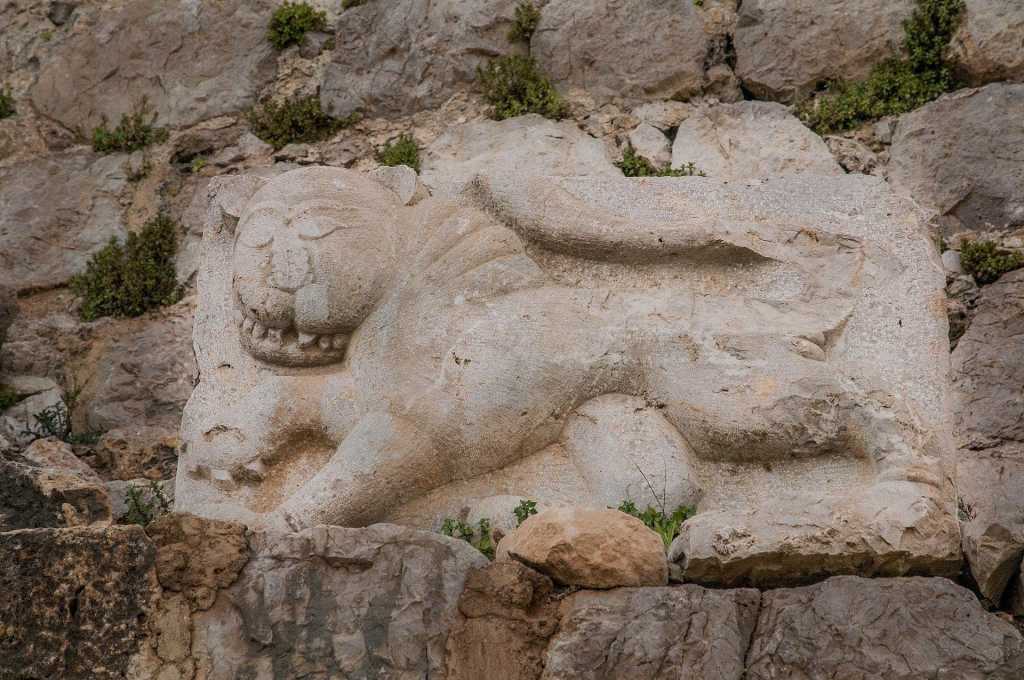
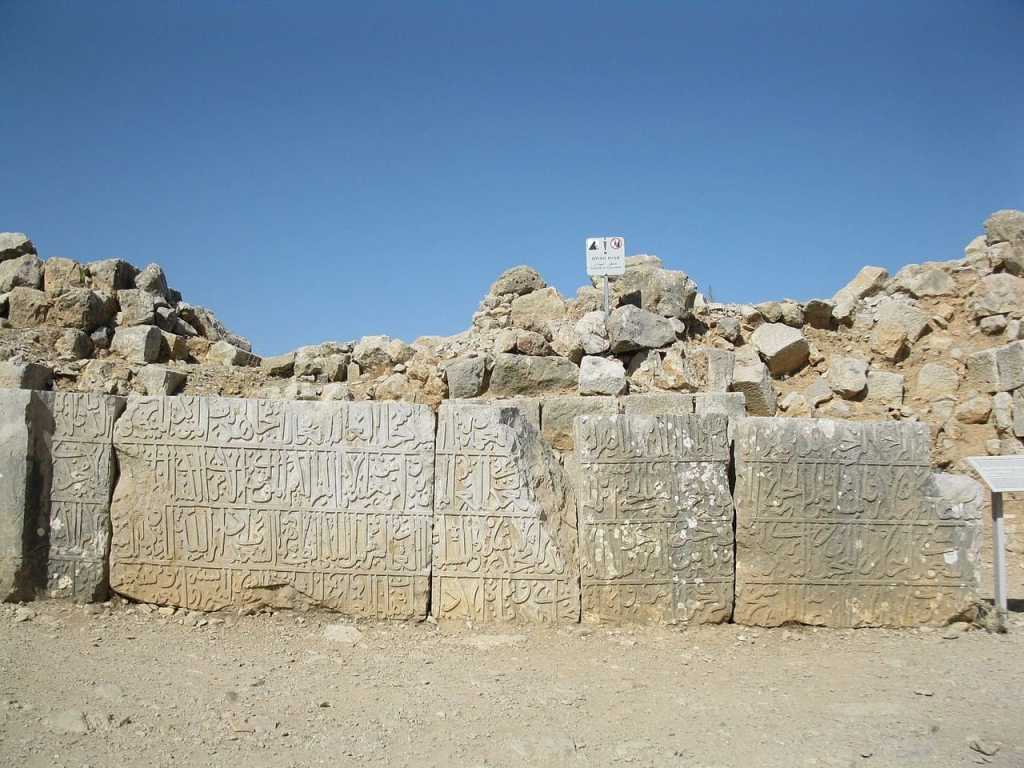
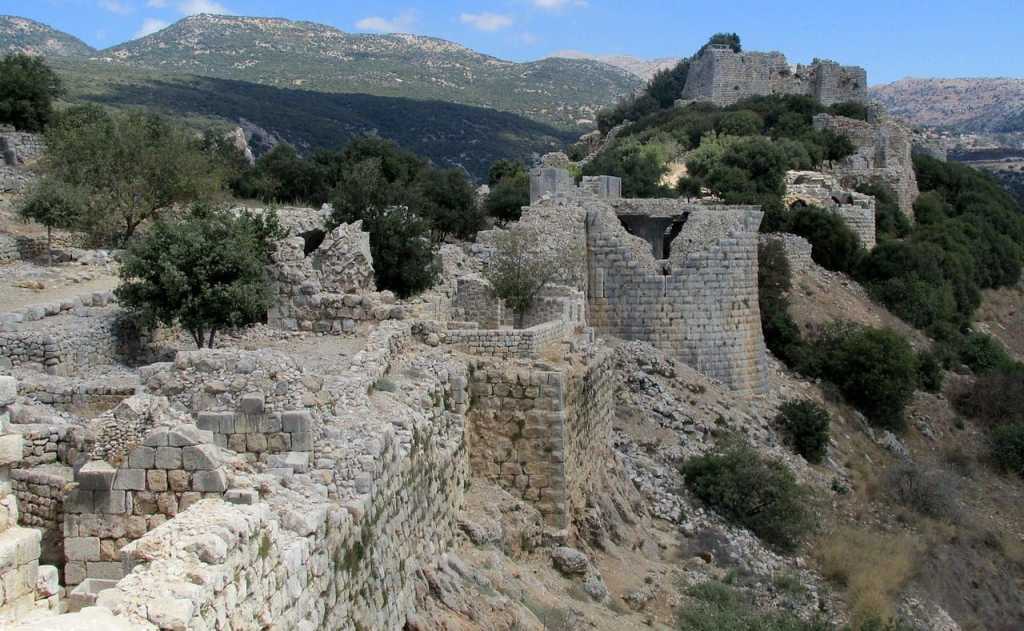
Finger of Nephilim
“NUMBER 13:30–33
THEN CALEB QUIETED THE PEOPLE BEFORE MOSES AND SAID, “WE SHOULD BY ALL MEANS GO UP AND TAKE POSSESSION OF IT, FOR WE WILL SURELY OVERCOME IT.” BUT THE MEN WHO HAD GONE UP WITH HIM SAID, “WE ARE NOT ABLE TO GO UP AGAINST THE PEOPLE, FOR THEY ARE TOO STRONG FOR US.” SO THEY GAVE OUT TO THE SONS OF ISRAEL A BAD REPORT OF THE LAND WHICH THEY HAD SPIED OUT, SAYING, “THE LAND THROUGH WHICH WE HAVE GONE, IN SPYING IT OUT, IS A LAND THAT DEVOURS ITS INHABITANTS; AND ALL THE PEOPLE WHOM WE SAW IN IT ARE MEN OF GREAT SIZE. THERE ALSO WE SAW THE NEPHILIM (THE SONS OF ANAK ARE PART OF THE NEPHILIM); AND WE BECAME LIKE GRASSHOPPERS IN OUR OWN SIGHT, AND SO WE WERE IN THEIR SIGHT.
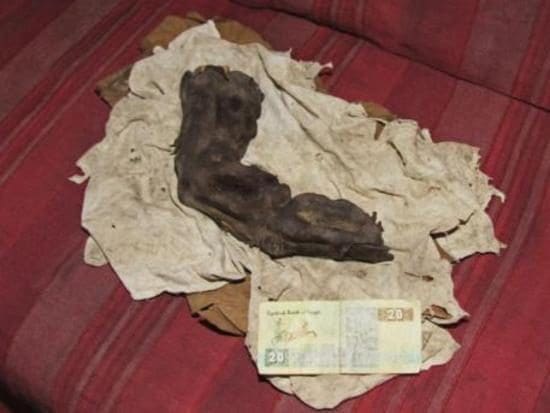
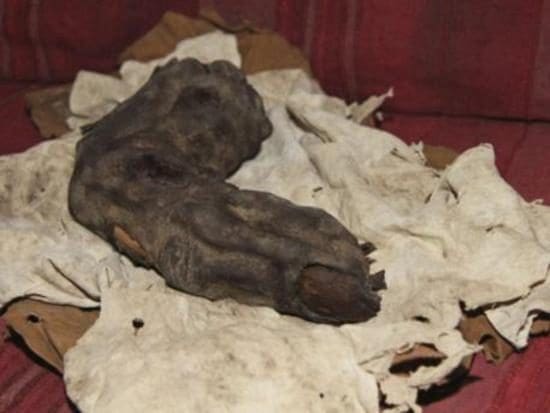
Nuzi Tablets
Nuzi was a Hurrian administrative center not far from the Hurrian capital at Kirkuk in northern Iraq. The Hurrians are equivalent to the Horites in the Old Testament, also called Hivites and Jebusites. Excavations were carried out at Nuzi by American teams from 1925 to 1933. The major find was more than 5,000 family and administrative archives spanning six generations, ca. 1450-1350 BC. They deal with the social, economic, religious and legal institutions of the Hurrians.
The tablets tell of practices similar to those in Genesis such as adoption for childless couples (Gn 15:2 children by proxy (Gn 16; 21:1, inheritance rights (Gn 25:29, marriage arrangements (Gn 28 and levirate marriage (Gn 38; Dt 25:5. They also demonstrate the significance of the deathbed blessing (Gn 27; 48 and household gods (Gn 31:14 30. Some Nuzi tablets, called ‘tablets of sistership,ve agreements in which a man adopted a woman as a sister. In the society of the Hurrians, a wife enjoyed both greater protection and a superior position when she also had the legal status of a sister. In such a case, two separate documents were drawn up, one for marriage and the other for sistership. This may explain why both Abraham (Gn 12:10 20:1and Isaac (Gn 26:7) said their wives were their sisters. It is possible that they had previously adopted them to give them higher status, in accordance with the custom of the day.
Family records were highly valued at Nuzi, being passed down from father to son for as many as six generations. Nowhere else in the ancient Near East is this kind of reverence for family documents illustrated, except in the Old Testament. Indirectly, the practice at Nuzi supports the position that Genesis and the other books of history in the Old Testament are grounded in actual family, clan and tribal records carefully passed from generation to generation.
As with Mari, the Nuzi records demonstrate that the cultural practices recorded in the book of Genesis are authentic. The accounts are not fictional stories written at a much later time, as some critics claim, since the customs were unknown in later periods.
Mari Archives
The ancient city of Mari, located in northern Syria, was a thriving metropolis ca. 2800–1760 BC. From about 2000 BC until its demise in 1760 BC, Mari was the capital of the Amorites. Amorites were spread far and wide throughout the ancient Near East, including the hill country of Canaan vanquished by the Israelites (Nm 13:29; Jos 10:6). The French have been excavating Mari almost continuously since 1933. The major discovery was an enormous palace covering six acres, with nearly 300 rooms on the ground level and an equal number on a second floor. It was in use from ca. 2300 BC until its destruction by Hammurabi in 1760 BC. An archive of about 15,000 texts from the final years of the palace provides a detailed insight into the common social, economic, and legal practices of that time. Contained in the archive are administrative and legal documents, letters, treaties, and literary and religious texts.
Some documents detail practices such as adoption and inheritance in ways that accord with how these practices are shown in the Genesis accounts. The tablets speak of the slaughtering of animals when covenants were made, judges similar to the judges of the Old Testament, gods that are also named in the Hebrew Bible, and personal names such as Noah, Abram, Laban, and Jacob. A city named Nahur, possibly named after Abraham’s grandfather Nahor (Gn 11:22–25), is mentioned, as well as the city of Haran, where Abraham lived for a time (Gn 11:31–12:4). Hazor is spoken of often in the Mari texts, and there is a reference to Laish (Dan) as well. A unique collection of 30 texts deals with prophetic messages that were delivered to local rulers who relayed them to the king.
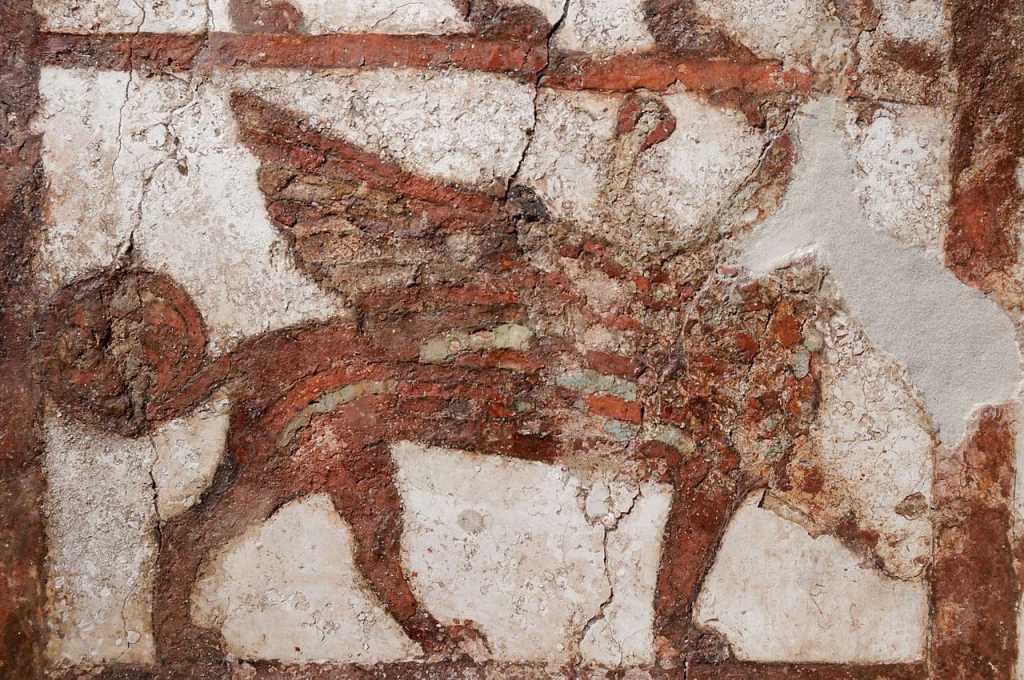
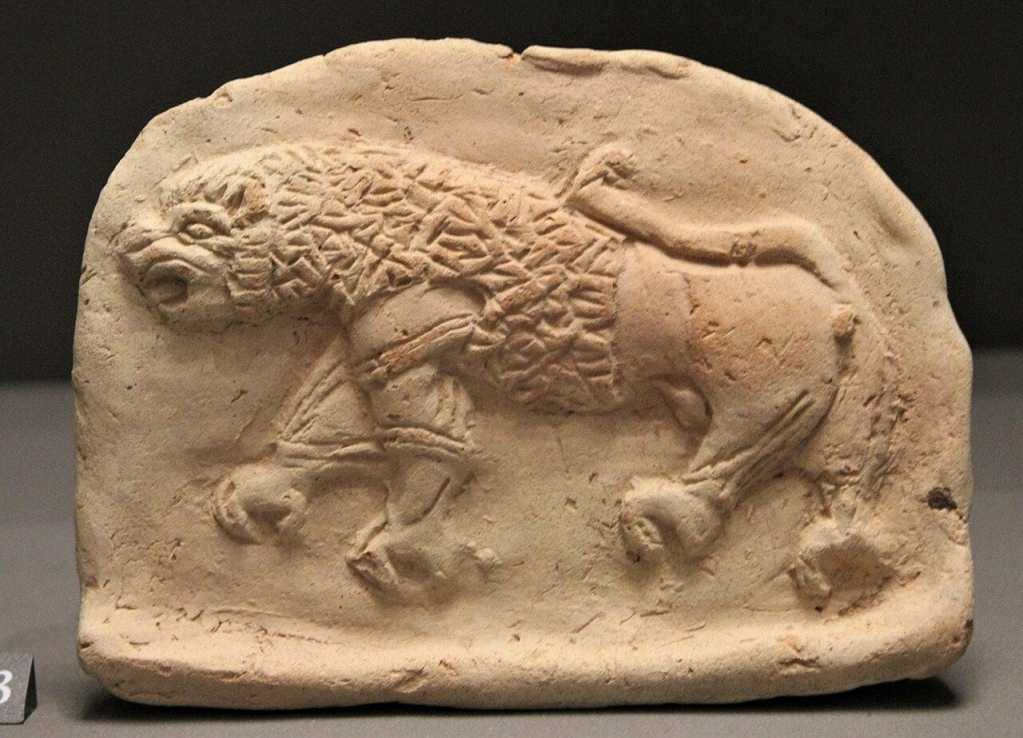
The lion above is found in every scripted anicent culture we have looked at so far in biblical archeology. The Musaru Firm, family of Babylonian banksters translate their name to “Wild Cat” its probable one layer of feline iconography is directed at the Jews themselves, making the lion a cryptojew. This rings true since ground zero of the Winged Lion is at home in Venice, said to be the origins of modern banking.
These models are part of a set of 32 divinatory livers found in Room 108 of Mari Palace. They were aide-memoirs for the priests or demonstration pieces for the schools of soothsayers. The one in the middle is interpreted as fortelling the destruction of small cities. Baken clay, 19th–18th centuries BC, found in the royal palace at Mari (now in Syria). Excavations of André Parrot 1935-1936. Louvre museum (Paris, France).
The disk lower right (Louvre) is the King founder of Mari, his disk translates, “Yahdun-Lim, son of Yaggid Lim; king of Mari, Tuttul and the country of the Hana-nomads; the powerful king, who controls the “Banks of the Euphrates”: Dagan proclaimed my kingship and, handing me a powerful weapon for destroying kings hostile to me, I defeated 7 kings Hana-nomad chiefs who successively challenged me, annexing their territory; I removed the invaders from the “Banks of the Euphrates,” giving peace to my land; I opened canals, thus eliminating well-water drawing throughout my land. I built Mari’s ramparts and dug its moat; I built Terqa’s ramparts and dug its moat..” “Controls the Banks of the Euphrates…” might not be the river but the financial institutions. Interesting that drop in Canals and Moats, since those are relics of the factual Olde World.
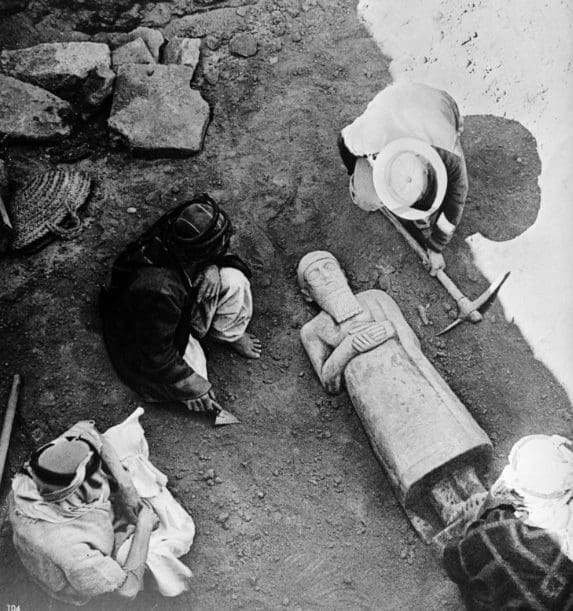
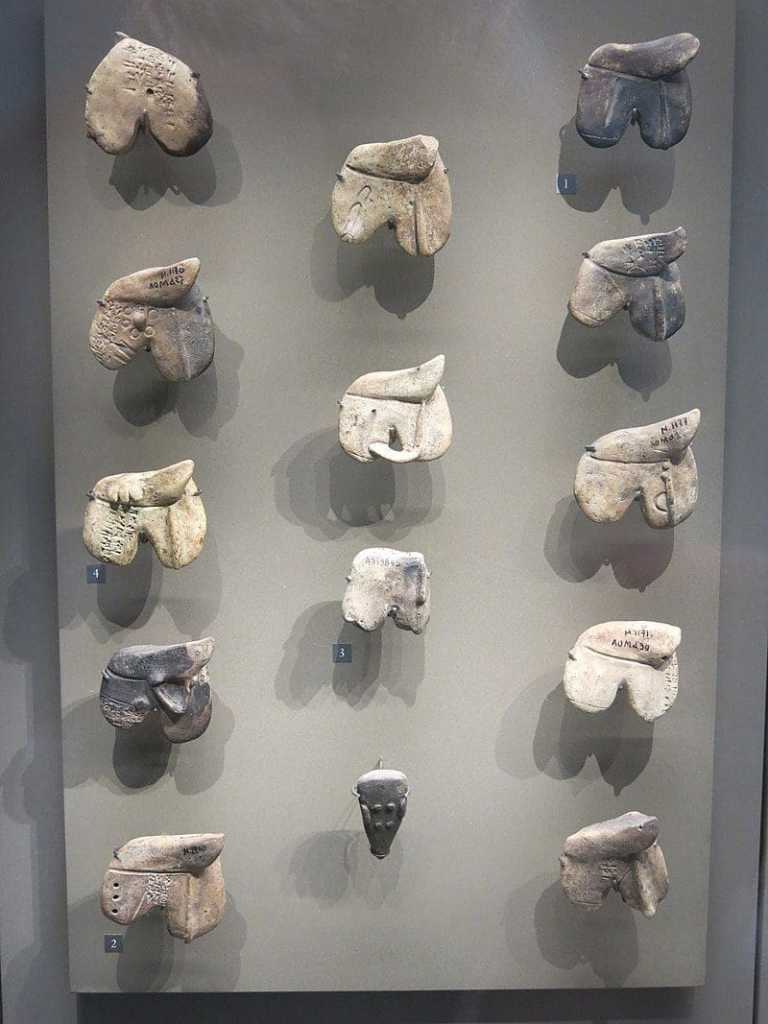

This is an excavation picture from the Mari Palace in 1935. Looks like a real archeology dig…except for the statue, and the people, and the surroundings… But I bet the basket is real…




